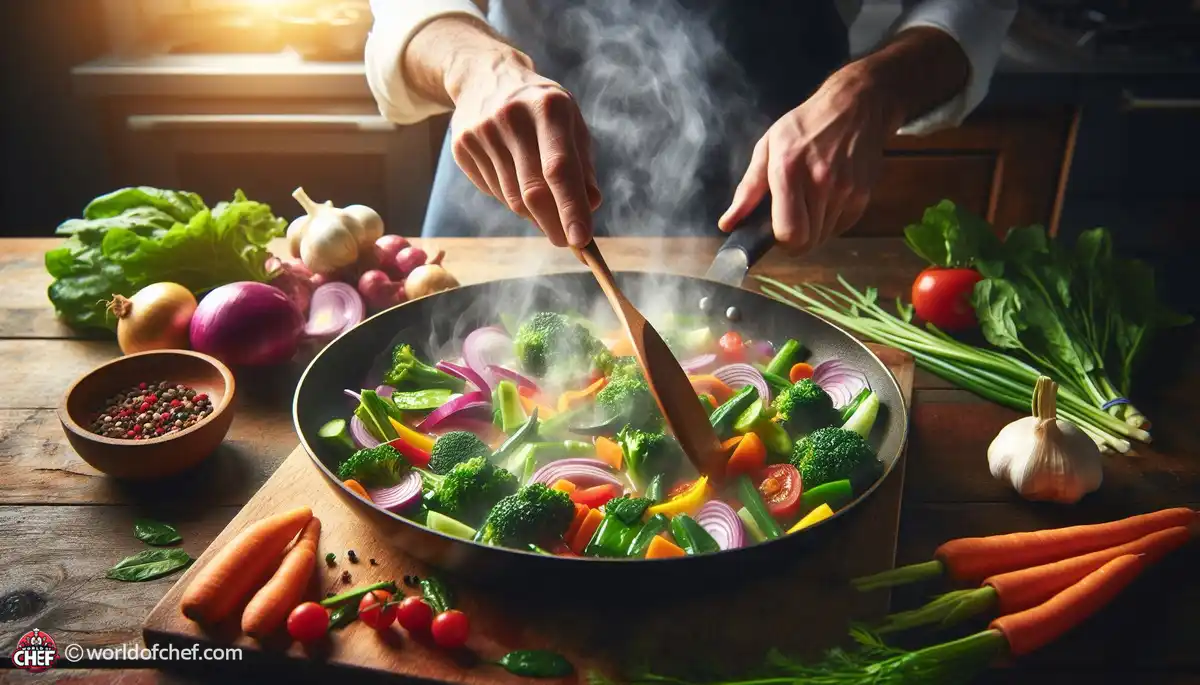
Simmering with Spices: Infusing Flavor into Your Dishes
Emery Donley - Oct 8, 2024 - 8 min read


Sauteing is an art form, unlocking the full potential of vegetables to coax out their natural flavors and enhance their textures. At its core, sauteing involves cooking food quickly in a small amount of oil or fat over high heat. But this technique goes far beyond just throwing the vegetables in a hot pan; it's about having that fine sense of knowing what makes heat, time, and ingredients come together at their best.
Such cooking techniques as sauteing are based on the complicated chemical process of the Maillard reaction, leading to the browning of vegetable products and caramelization along with the development of flavor. This is what has made sauteed veggies sound so rich and savory-a true culinary masterpiece from the very first bite.
The pan and oil you will use can make or break your sauteed vegetables. Heavy-bottomed skillet or saute pan with a wide cooking surface is the best way to distribute heat evenly and provide enough room to toss and stir ingredients. The choice of oil is very important as well. Use high smoke point oils such as olive oil, avocado oil, or ghee. These oils do not burn easily at the high temperatures required for sauteing and will not transfer off-flavors to your vegetables.
You have to balance your veggies before it even reaches the stove's turn. It is with equality, as through this uniform cooking along with consistent outcome will be generated. So you should chop, slice, and dice your vegetables in equal size so that equating in cooking happens instead of a few pieces of vegetables get cooked and a few don't get cooked.
The secret weapons of any saute master are aromatics like garlic, onions, shallots, and fresh herbs. Not only do they add layers of flavor, but their enticing aromas will entice taste buds. So mince or finely chop your aromatics and add them to the pan at the very beginning of the sauteing process to build the flavor foundation for your vegetables.
Creating the perfect seasonings or spices to add flavor to your sauteed vegetables doesn't have to be intimidating. Try some different herbs, spices, and seasoning blends to build layers of depth and complexity into your dish. A pinch of smoked paprika might bring that smokiness, and a sprinkle of freshly ground black pepper the heat; just the right seasoning will make sauteed vegetables go from the ordinary to the extraordinary.
When getting ready to sauté, first heat up the pan to a sufficient state. A hot pan does wonders for a right sear and caramelization to your vegetables. You know if you have heated it right since a few drops of water flicked on its surface will sizzle and promptly evaporate when ready; pour in the oil and vegetable mixture.
While high heat is essential for sautéing, it has to be at the correct level, otherwise, your vegetables end up burnt or are unevenly cooked. So, let your pan go high first, then slightly lower when you notice them start burning. Toss and stir frequently so that your vegetables don't stick in one side of the pan.
The toss is a very basic skill for sauteing and can distribute heat and flavors evenly in your dish. This can be achieved by using the spatula or flicking the wrist to flip and stir your vegetables in the pan. Both sides of the vegetables must be cooked. Do not be afraid to be a little bold with your toss technique - a confident flick of the wrist will add a little flair to your cooking and can also help get that perfect sauteed texture.
Timing is very essential in sauteing, so keep a close eye on how your vegetables are cooking. Overcooked vegetables become mushy and lose their vibrancy and flavor, whereas undercooked vegetables can be hard and unpalatable. Keep an eye on the vegetables as they cook, tasting them to know how done they are and making adjustments to the cooking time.
Not all vegetables are created equal, and each variety has its unique characteristics and cooking times. Leafy Greens like spinach and kale will wilt and cook much faster than dense root vegetables like potatoes and carrots. Be mindful of these differences and adjust your cooking times accordingly to ensure that each vegetable is cooked to perfection.
The final stir-fry brings everything together in the last minute of cooking. Your vegetables will be perfectly cooked, so now season them: salt, squeeze of lemon juice or vinegar in to brighten the flavors even out with fresh herbs or a drizzle of good-quality olive oil.
Sauteing is much more than a culinary technique-it's a journey through bright, exciting flavors and textures that tap into the vibrancy of vegetables. Techniques of sauteing can be mastered to take your cooking to new heights, bursting with energy and flavor from every dish. So the next time you are in the kitchen, channel your inner saute master and let your creativity shine. With a hot pan, the right ingredients, and a dash of inspiration, you will be well on your way to sauteed vegetable perfection.

Emery Donley - Oct 8, 2024 - 8 min read

Russell Comeaux - Oct 8, 2024 - 8 min read

Walter Backus - Oct 7, 2024 - 8 min read

Samantha Thames - Oct 7, 2024 - 6 min read